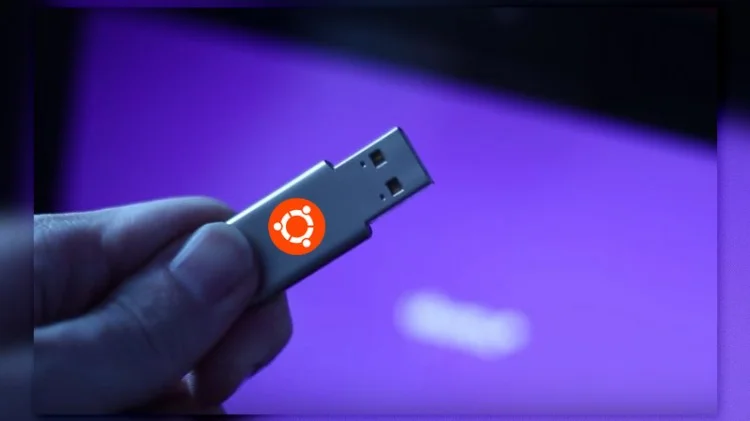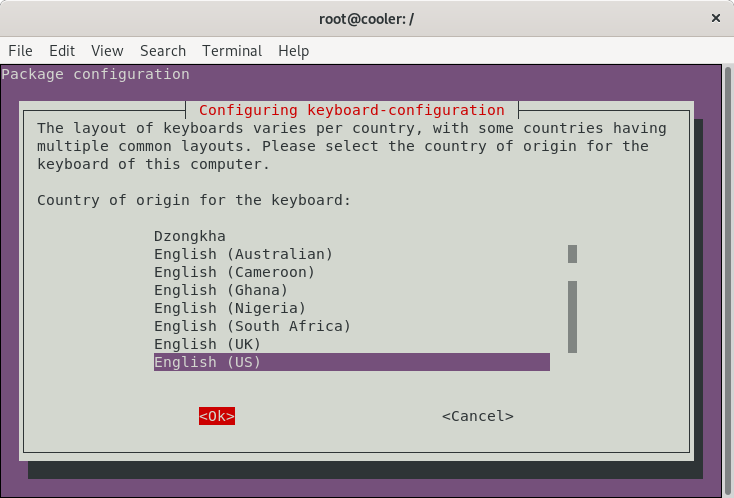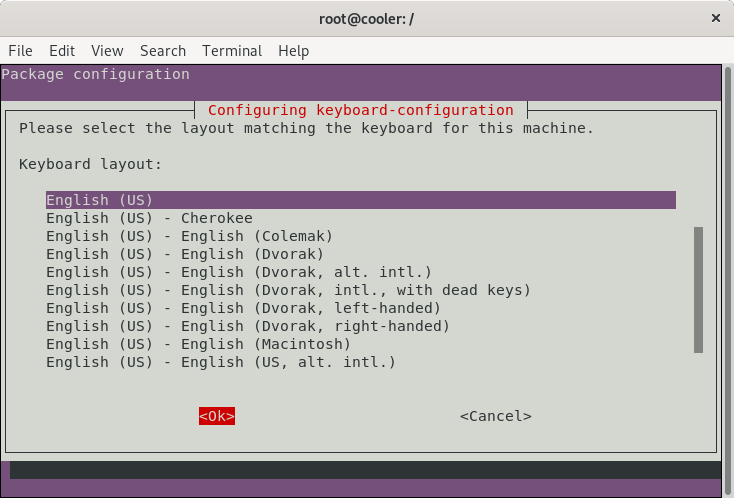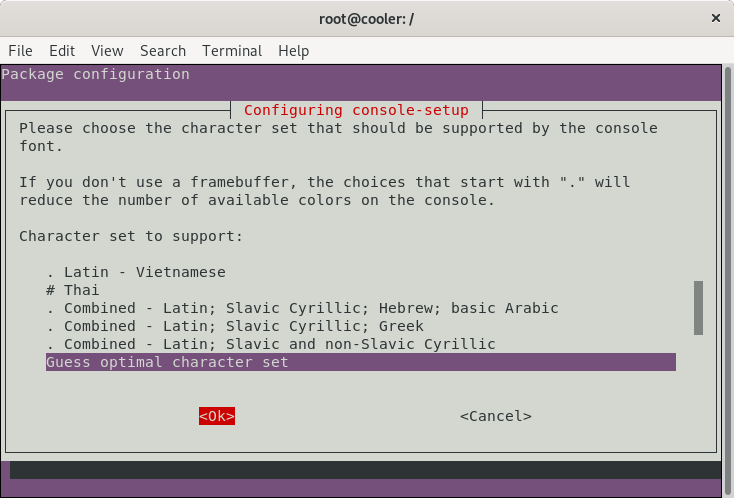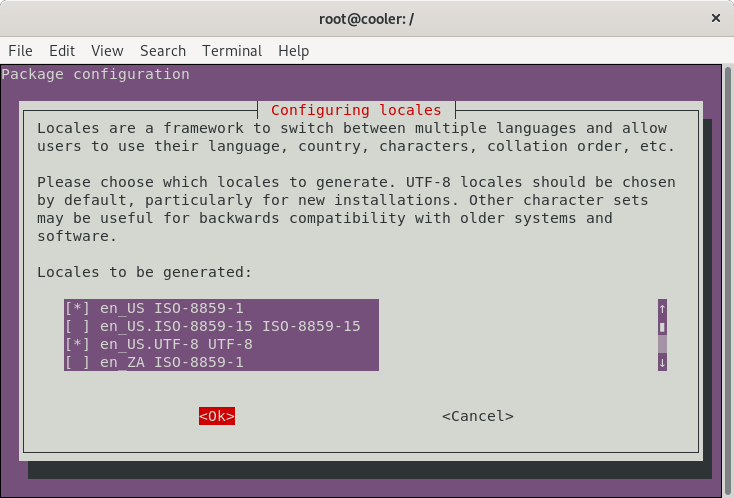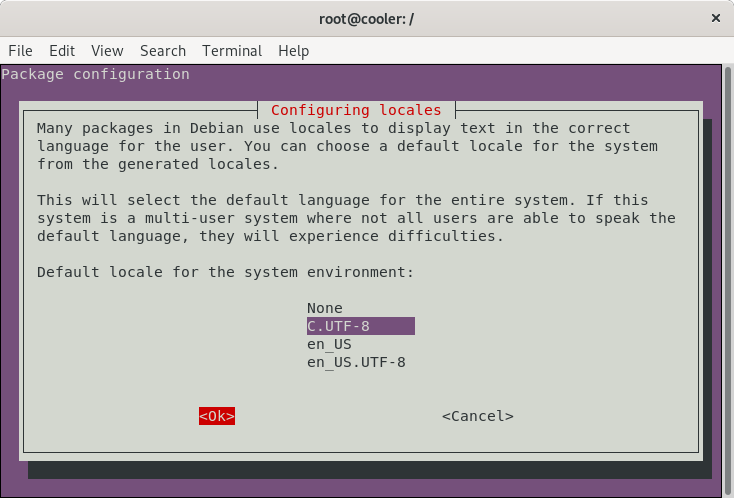This project guides you through building a fully customized version of Ubuntu Linux from scratch. It covers creating a live ISO image that includes pre-installed packages, configurations, and custom scripts tailored to your needs. The steps walk you through setting up the environment, configuring the chroot, installing software, modifying the kernel, and finally generating the ISO image. This is ideal for those who want complete control over their Linux distribution, whether for personal or professional use.
- Proficiency with Linux shell commands and scripting.
- Sufficient disk space and memory for building an ISO.
- Prepare the Environment: Install necessary dependencies.
- Create a Base System: Use debootstrap to set up a minimal Ubuntu system.
- Customize Packages: Add/remove software, configure kernel.
- Generate ISO: Package the system into a bootable ISO.
- Marcos Vallim - Founder, Author, Development, Test, Documentation - mvallim
- Ken Gilmer - Commiter, Development, Test, Documentation - kgilmer
See also the list of contributors who participated in this project.
- (Recommended) follow the directions step by step below to understand how to build an Ubuntu ISO.
- Run the
build.shscript in thescriptsdirectory after checking this repo out locally. - Fork this repo and run the github action
build. This will generate an ISO in your github account.
build system- the computer environment running the build scripts that generate the ISO.live system- the computer environment that runs from the live OS, generated by abuild system. This may also be referred to as thechroot environment.target system- the computer environment that runs after installation has completed from alive system.
Important
It is very important to remember that the version you are generating depends on the version being used on the host machine.
Example:
If I am generating a from scratch bionic version, it is necessary for the host machine to have a bionic version or higher installed.
| Scratch | Host |
|---|---|
bionic |
>= bionic |
focal |
>= focal |
jammy |
>= jammy |
noble |
>= noble |
Install packages we need in the build system required by our scripts.
sudo apt-get install \
debootstrap \
squashfs-tools \
xorrisomkdir $HOME/live-ubuntu-from-scratchdebootstrap is a program for generating OS images. We install it into our build system to begin generating our ISO.
-
Checkout bootstrap
sudo debootstrap \ --arch=amd64 \ --variant=minbase \ noble \ $HOME/live-ubuntu-from-scratch/chroot \ http://us.archive.ubuntu.com/ubuntu/debootstrap is used to create a Debian base system from scratch, without requiring the availability of dpkg or apt. It does this by downloading .deb files from a mirror site, and carefully unpacking them into a directory which can eventually be chrooted into.
-
Configure external mount points
sudo mount --bind /dev $HOME/live-ubuntu-from-scratch/chroot/dev sudo mount --bind /run $HOME/live-ubuntu-from-scratch/chroot/run
As we will be updating and installing packages (grub among them), these mount points are necessary inside the chroot environment, so we are able to finish the installation without errors.
A chroot on Unix operating systems is an operation that changes the apparent root directory for the current running process and its children. A program that is run in such a modified environment cannot name (and therefore normally cannot access) files outside the designated directory tree. The term "chroot" may refer to the chroot system call or the chroot wrapper program. The modified environment is called a chroot jail.
Reference: https://en.wikipedia.org/wiki/Chroot
From this point we will be configuring the live system.
-
Access chroot environment
sudo chroot $HOME/live-ubuntu-from-scratch/chroot -
Configure mount points, home and locale
mount none -t proc /proc mount none -t sysfs /sys mount none -t devpts /dev/pts export HOME=/root export LC_ALL=C
These mount points are necessary inside the chroot environment, so we are able to finish the installation without errors.
-
Set a custom hostname
echo "ubuntu-fs-live" > /etc/hostname
-
Configure apt sources.list
cat <<EOF > /etc/apt/sources.list deb http://us.archive.ubuntu.com/ubuntu/ noble main restricted universe multiverse deb-src http://us.archive.ubuntu.com/ubuntu/ noble main restricted universe multiverse deb http://us.archive.ubuntu.com/ubuntu/ noble-security main restricted universe multiverse deb-src http://us.archive.ubuntu.com/ubuntu/ noble-security main restricted universe multiverse deb http://us.archive.ubuntu.com/ubuntu/ noble-updates main restricted universe multiverse deb-src http://us.archive.ubuntu.com/ubuntu/ noble-updates main restricted universe multiverse EOF
-
Update indexes packages
apt-get update
-
Install systemd
apt-get install -y libterm-readline-gnu-perl systemd-sysv
systemd is a system and service manager for Linux. It provides aggressive parallelization capabilities, uses socket and D-Bus activation for starting services, offers on-demand starting of daemons, keeps track of processes using Linux control groups, maintains mount and automount points and implements an elaborate transactional dependency-based service control logic.
-
Configure machine-id and divert
dbus-uuidgen > /etc/machine-id ln -fs /etc/machine-id /var/lib/dbus/machine-idThe
/etc/machine-idfile contains the unique machine ID of the local system that is set during installation or boot. The machine ID is a single newline-terminated, hexadecimal, 32-character, lowercase ID. When decoded from hexadecimal, this corresponds to a 16-byte/128-bit value. This ID may not be all zeros.dpkg-divert --local --rename --add /sbin/initctl ln -s /bin/true /sbin/initctl
dpkg-divert is the utility used to set up and update the list of diversions.
-
Upgrade packages
apt-get -y upgrade
-
Install packages needed for Live System
apt-get install -y \ sudo \ ubuntu-standard \ casper \ discover \ laptop-detect \ os-prober \ network-manager \ net-tools \ wireless-tools \ wpagui \ locales \ grub-common \ grub-gfxpayload-lists \ grub-pc \ grub-pc-bin \ grub2-common \ grub-efi-amd64-signed \ shim-signed \ mtools \ binutils
apt-get install -y --no-install-recommends linux-generic
-
Graphical installer
apt-get install -y \ ubiquity \ ubiquity-casper \ ubiquity-frontend-gtk \ ubiquity-slideshow-ubuntu \ ubiquity-ubuntu-artwork
The next steps will appear, as a result of the packages that will be installed from the previous step, this will happen without anything having to be informed or executed.
-
Install window manager
apt-get install -y \ plymouth-themes \ ubuntu-gnome-desktop \ ubuntu-gnome-wallpapers
-
Install useful applications
apt-get install -y \ clamav-daemon \ terminator \ apt-transport-https \ curl \ vim \ nano \ less
-
Install Visual Studio Code (optional)
-
Download and install the key
curl https://packages.microsoft.com/keys/microsoft.asc | gpg --dearmor > microsoft.gpg install -o root -g root -m 644 microsoft.gpg /etc/apt/trusted.gpg.d/ echo "deb [arch=amd64] https://packages.microsoft.com/repos/vscode stable main" > /etc/apt/sources.list.d/vscode.list rm microsoft.gpg
-
Then update the package cache and install the package using
apt-get update apt-get install -y code
-
-
Install Google Chrome (optional)
-
Download and install the key
wget -q -O - https://dl-ssl.google.com/linux/linux_signing_key.pub | sudo apt-key add - echo "deb http://dl.google.com/linux/chrome/deb/ stable main" > /etc/apt/sources.list.d/google-chrome.list
-
Then update the package cache and install the package using
apt-get update apt-get install google-chrome-stable
-
-
Install Java JDK 8 (optional)
apt-get install -y \ openjdk-8-jdk \ openjdk-8-jre -
Remove unused applications (optional)
apt-get purge -y \ transmission-gtk \ transmission-common \ gnome-mahjongg \ gnome-mines \ gnome-sudoku \ aisleriot \ hitori
-
Remove unused packages
apt-get autoremove -y
-
Reconfigure packages
-
Generate locales
dpkg-reconfigure locales
-
Configure network-manager
-
Create config file
cat <<EOF > /etc/NetworkManager/NetworkManager.conf [main] rc-manager=none plugins=ifupdown,keyfile dns=systemd-resolved [ifupdown] managed=false EOF
-
Reconfigure network-manager
dpkg-reconfigure network-manager
-
-
We are now back in our build environment after setting up our live system and will continue creating files necessary to generate the ISO.
-
Create directories
mkdir -p /image/{casper,isolinux,install} -
Copy kernel images
cp /boot/vmlinuz-**-**-generic /image/casper/vmlinuz cp /boot/initrd.img-**-**-generic /image/casper/initrd
-
Copy memtest86+ binary (BIOS and UEFI)
wget --progress=dot https://memtest.org/download/v7.00/mt86plus_7.00.binaries.zip -O /image/install/memtest86.zip unzip -p /image/install/memtest86.zip memtest64.bin > /image/install/memtest86+.bin unzip -p /image/install/memtest86.zip memtest64.efi > /image/install/memtest86+.efi rm -f /image/install/memtest86.zip
-
Create base point access file for grub
touch /image/ubuntu
-
Create image/isolinux/grub.cfg
cat <<EOF > /image/isolinux/grub.cfg search --set=root --file /ubuntu insmod all_video set default="0" set timeout=30 menuentry "Try Ubuntu FS without installing" { linux /casper/vmlinuz boot=casper nopersistent toram quiet splash --- initrd /casper/initrd } menuentry "Install Ubuntu FS" { linux /casper/vmlinuz boot=casper only-ubiquity quiet splash --- initrd /casper/initrd } menuentry "Check disc for defects" { linux /casper/vmlinuz boot=casper integrity-check quiet splash --- initrd /casper/initrd } grub_platform if [ "\$grub_platform" = "efi" ]; then menuentry 'UEFI Firmware Settings' { fwsetup } menuentry "Test memory Memtest86+ (UEFI)" { linux /install/memtest86+.efi } else menuentry "Test memory Memtest86+ (BIOS)" { linux16 /install/memtest86+.bin } fi EOF
Next we create a file filesystem.manifest to specify each package and it's version that is installed on the live system. We create another file filesystem.manifest-desktop which specifies which files will be installed on the target system. Once the Ubiquity installer completes, it will
remove packages specified in filesystem.manifest that are not listed in filesystem.manifest-desktop.
-
Generate manifest
dpkg-query -W --showformat='${Package} ${Version}\n' | sudo tee /image/casper/filesystem.manifest cp -v /image/casper/filesystem.manifest image/casper/filesystem.manifest-desktop sed -i '/ubiquity/d' /image/casper/filesystem.manifest-desktop sed -i '/casper/d' /image/casper/filesystem.manifest-desktop sed -i '/discover/d' /image/casper/filesystem.manifest-desktop sed -i '/laptop-detect/d' /image/casper/filesystem.manifest-desktop sed -i '/os-prober/d' /image/casper/filesystem.manifest-desktop
README file often found on Linux LiveCD installer discs, such as an Ubuntu Linux installation CD; typically named “README.diskdefines” and may be referenced during installation.
-
Create file /image/README.diskdefines
cat <<EOF > /image/README.diskdefines #define DISKNAME Ubuntu from scratch #define TYPE binary #define TYPEbinary 1 #define ARCH amd64 #define ARCHamd64 1 #define DISKNUM 1 #define DISKNUM1 1 #define TOTALNUM 0 #define TOTALNUM0 1 EOF
-
Access image directory
cd /image -
Copy EFI loaders
cp /usr/lib/shim/shimx64.efi.signed.previous isolinux/bootx64.efi cp /usr/lib/shim/mmx64.efi isolinux/mmx64.efi cp /usr/lib/grub/x86_64-efi-signed/grubx64.efi.signed isolinux/grubx64.efi
-
Create a FAT16 UEFI boot disk image containing the EFI bootloaders
( cd isolinux && \ dd if=/dev/zero of=efiboot.img bs=1M count=10 && \ mkfs.vfat -F 16 efiboot.img && \ LC_CTYPE=C mmd -i efiboot.img efi efi/ubuntu efi/boot && \ LC_CTYPE=C mcopy -i efiboot.img ./bootx64.efi ::efi/boot/bootx64.efi && \ LC_CTYPE=C mcopy -i efiboot.img ./mmx64.efi ::efi/boot/mmx64.efi && \ LC_CTYPE=C mcopy -i efiboot.img ./grubx64.efi ::efi/boot/grubx64.efi && \ LC_CTYPE=C mcopy -i efiboot.img ./grub.cfg ::efi/ubuntu/grub.cfg )
-
Create a grub BIOS image
grub-mkstandalone \ --format=i386-pc \ --output=isolinux/core.img \ --install-modules="linux16 linux normal iso9660 biosdisk memdisk search tar ls" \ --modules="linux16 linux normal iso9660 biosdisk search" \ --locales="" \ --fonts="" \ "boot/grub/grub.cfg=isolinux/grub.cfg"
-
Combine a bootable Grub cdboot.img
cat /usr/lib/grub/i386-pc/cdboot.img isolinux/core.img > isolinux/bios.img -
Generate md5sum.txt
/bin/bash -c "(find . -type f -print0 | xargs -0 md5sum | grep -v -e 'isolinux' > md5sum.txt)"
-
If you installed software, be sure to run
truncate -s 0 /etc/machine-id
-
Remove the diversion
rm /sbin/initctl dpkg-divert --rename --remove /sbin/initctl
-
Clean up
apt-get clean rm -rf /tmp/* ~/.bash_history umount /proc umount /sys umount /dev/pts export HISTSIZE=0 exit
sudo umount $HOME/live-ubuntu-from-scratch/chroot/dev
sudo umount $HOME/live-ubuntu-from-scratch/chroot/runAfter everything has been installed and preconfigured in the chrooted environment, we need to generate an image of everything that was done by following the next steps in the build environment.
-
Access build directory
cd $HOME/live-ubuntu-from-scratch
-
Move image artifacts
sudo mv chroot/image . -
Create squashfs
sudo mksquashfs chroot image/casper/filesystem.squashfs \ -noappend -no-duplicates -no-recovery \ -wildcards \ -comp xz -b 1M -Xdict-size 100% \ -e "var/cache/apt/archives/*" \ -e "root/*" \ -e "root/.*" \ -e "tmp/*" \ -e "tmp/.*" \ -e "swapfile"
Squashfs is a highly compressed read-only filesystem for Linux. It uses zlib compression to compress both files, inodes and directories. Inodes in the system are very small and all blocks are packed to minimize data overhead. Block sizes greater than 4K are supported up to a maximum of 64K. Squashfs is intended for general read-only filesystem use, for archival use (i.e. in cases where a .tar.gz file may be used), and in constrained block device/memory systems (e.g. embedded systems) where low overhead is needed.
-
Write the filesystem.size
printf $(sudo du -sx --block-size=1 chroot | cut -f1) | sudo tee image/casper/filesystem.size
-
Access build directory
cd $HOME/live-ubuntu-from-scratch/image
-
Create iso from the image directory using the command-line
sudo xorriso \ -as mkisofs \ -iso-level 3 \ -full-iso9660-filenames \ -J -J -joliet-long \ -volid "Ubuntu from scratch" \ -output "../ubuntu-from-scratch.iso" \ -eltorito-boot isolinux/bios.img \ -no-emul-boot \ -boot-load-size 4 \ -boot-info-table \ --eltorito-catalog boot.catalog \ --grub2-boot-info \ --grub2-mbr ../chroot/usr/lib/grub/i386-pc/boot_hybrid.img \ -partition_offset 16 \ --mbr-force-bootable \ -eltorito-alt-boot \ -no-emul-boot \ -e isolinux/efiboot.img \ -append_partition 2 28732ac11ff8d211ba4b00a0c93ec93b isolinux/efiboot.img \ -appended_part_as_gpt \ -iso_mbr_part_type a2a0d0ebe5b9334487c068b6b72699c7 \ -m "isolinux/efiboot.img" \ -m "isolinux/bios.img" \ -e '--interval:appended_partition_2:::' \ -exclude isolinux \ -graft-points \ "/EFI/boot/bootx64.efi=isolinux/bootx64.efi" \ "/EFI/boot/mmx64.efi=isolinux/mmx64.efi" \ "/EFI/boot/grubx64.efi=isolinux/grubx64.efi" \ "/EFI/ubuntu/grub.cfg=isolinux/grub.cfg" \ "/isolinux/bios.img=isolinux/bios.img" \ "/isolinux/efiboot.img=isolinux/efiboot.img" \ "."
-
Create a ISOLINUX (syslinux) boot menu
cat <<EOF> isolinux/isolinux.cfg UI vesamenu.c32 MENU TITLE Boot Menu DEFAULT linux TIMEOUT 600 MENU RESOLUTION 640 480 MENU COLOR border 30;44 #40ffffff #a0000000 std MENU COLOR title 1;36;44 #9033ccff #a0000000 std MENU COLOR sel 7;37;40 #e0ffffff #20ffffff all MENU COLOR unsel 37;44 #50ffffff #a0000000 std MENU COLOR help 37;40 #c0ffffff #a0000000 std MENU COLOR timeout_msg 37;40 #80ffffff #00000000 std MENU COLOR timeout 1;37;40 #c0ffffff #00000000 std MENU COLOR msg07 37;40 #90ffffff #a0000000 std MENU COLOR tabmsg 31;40 #30ffffff #00000000 std LABEL linux MENU LABEL Try Ubuntu FS MENU DEFAULT KERNEL /casper/vmlinuz APPEND initrd=/casper/initrd boot=casper LABEL linux MENU LABEL Try Ubuntu FS (nomodeset) MENU DEFAULT KERNEL /casper/vmlinuz APPEND initrd=/casper/initrd boot=casper nomodeset EOF
-
Include syslinux bios modules
apt install -y syslinux-common && \ cp /usr/lib/ISOLINUX/isolinux.bin image/isolinux/ && \ cp /usr/lib/syslinux/modules/bios/* image/isolinux/
-
Access build directory
cd $HOME/live-ubuntu-from-scratch/image
-
Create iso from the image directory
sudo xorriso \ -as mkisofs \ -iso-level 3 \ -full-iso9660-filenames \ -J -J -joliet-long \ -volid "Ubuntu from scratch" \ -output "../ubuntu-from-scratch.iso" \ -isohybrid-mbr /usr/lib/ISOLINUX/isohdpfx.bin \ -eltorito-boot \ isolinux/isolinux.bin \ -no-emul-boot \ -boot-load-size 4 \ -boot-info-table \ --eltorito-catalog isolinux/isolinux.cat \ -eltorito-alt-boot \ -e /EFI/boot/efiboot.img \ -no-emul-boot \ -isohybrid-gpt-basdat \ -append_partition 2 0xef EFI/boot/efiboot.img \ "$HOME/live-ubuntu-from-scratch/image"
It is simple and easy, using "dd"
sudo dd if=ubuntu-from-scratch.iso of=<device> status=progress oflag=syncThis completes the process of creating a live Ubuntu installer from scratch. The generated ISO may be tested in a virtual machine such as VirtualBox or written to media and booted from a standard PC.
Please read CONTRIBUTING.md for details on our code of conduct, and the process for submitting pull requests to us.
We use GitHub for versioning. For the versions available, see the tags on this repository.
This project is licensed under the GNU GENERAL PUBLIC LICENSE - see the LICENSE file for details
